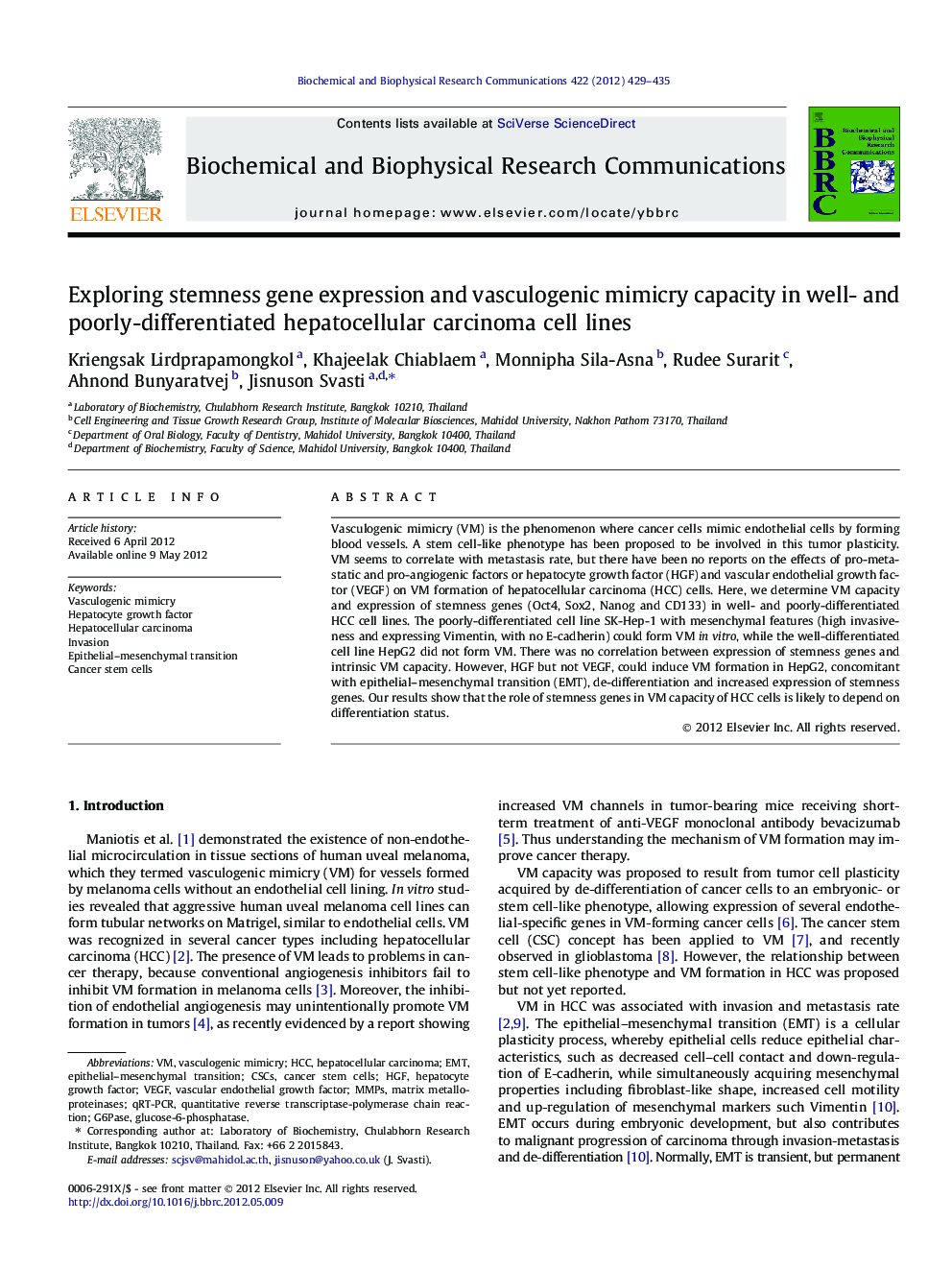| Article ID | Journal | Published Year | Pages | File Type |
|---|---|---|---|---|
| 1929524 | Biochemical and Biophysical Research Communications | 2012 | 7 Pages |
Vasculogenic mimicry (VM) is the phenomenon where cancer cells mimic endothelial cells by forming blood vessels. A stem cell-like phenotype has been proposed to be involved in this tumor plasticity. VM seems to correlate with metastasis rate, but there have been no reports on the effects of pro-metastatic and pro-angiogenic factors or hepatocyte growth factor (HGF) and vascular endothelial growth factor (VEGF) on VM formation of hepatocellular carcinoma (HCC) cells. Here, we determine VM capacity and expression of stemness genes (Oct4, Sox2, Nanog and CD133) in well- and poorly-differentiated HCC cell lines. The poorly-differentiated cell line SK-Hep-1 with mesenchymal features (high invasiveness and expressing Vimentin, with no E-cadherin) could form VM in vitro, while the well-differentiated cell line HepG2 did not form VM. There was no correlation between expression of stemness genes and intrinsic VM capacity. However, HGF but not VEGF, could induce VM formation in HepG2, concomitant with epithelial–mesenchymal transition (EMT), de-differentiation and increased expression of stemness genes. Our results show that the role of stemness genes in VM capacity of HCC cells is likely to depend on differentiation status.
► This report explores stemness genes in VM-forming HCC cells. ► Modulation of VM by HGF raises the possibility of preventing VM formation in vivo. ► Study of angiogenesis genes suggests that VM differs from endothelial angiogenesis. ► Twist1 plays a more important role than Snail1 in VM formation of HCC cells.
